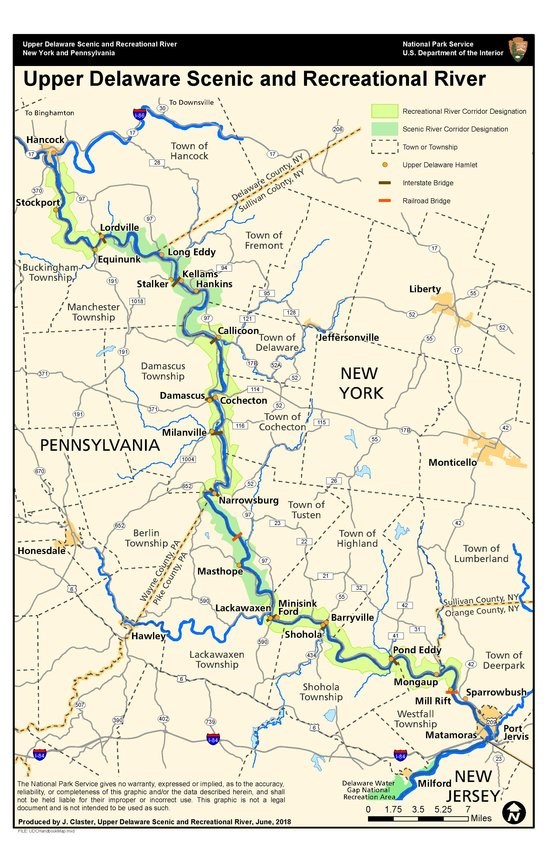
NPS Park PurposeThe Upper Delaware Scenic and Recreational River protects, conserves, and enhances the free-flowing character, exceptionally high water quality, and the scenic, recreational, ecological, cultural, and geological values of the Upper Delaware River valley through collaborative partnerships and cooperation with state and local government entities. Management as a Wild and Scenic RiverIn 1968, Congress passed the Wild and Scenic Rivers Act. The act "declared to be the policy of the United States that certain selected rivers of the Nation, which with their immediate environments possess outstandingly remarkable scenic, recreational, geologic, fish and wildlife, historic, cultural, or other similar values, shall be preserved in free-flowing condition, and that they and their immediate environments shall be protected for the benefit and enjoyment of present and future generations." 
National Park Service Under the Wild and Scenic Rivers Act, rivers included in the National Wild and Scenic Rivers System are classified, designated, and managed as wild, scenic, and/or recreational. Upper Delaware Scenic and Recreational River contains two types of river designations, which are characterized as follows:
Based on the recommendations of the 1976 Wild and Scenic River Study for the Upper Delaware River, the 73.4 miles of the river within the park are broken into two scenic and three recreational segments. The designated segments of the river and the rationale for these designations are described in the 1986 Final River Management Plan for the Upper Delaware Scenic and Recreational River. 
NPS Management as a Unit of the National Park ServiceUpper Delaware Scenic and Recreational River is operated by a dedicated staff of 24 to 40 permanent and seasonal employees and volunteers depending on the time of the year. All employees function in one of seven divisions:
Within Upper Delaware Scenic and Recreational River, park managers set priorities and submit projects to accomplish the goals and actions described in the River Management Plan, guiding both the park's partnership activities and its more traditional park operations. Administration keeps the park running, cultural resources protects historic and archaeological resources, interpretive park rangers educate the public, U.S. Park Rangers respond to visitor needs, natural resources protects the ecosystem, and maintenance cares for park facilities. Upper Delaware Annual Workplan for Resource and Recreational Use ManagementThe Upper Delaware Annual Workplan highlights annual accomplishments and outlines planned activities in alignment with the River Management Plan for the upcoming year. The annual workplan is reviewed by the Upper Delaware Council for feedback and recommendations before it is finalized. Copies of annual workplans are available for download below: |
Last updated: July 3, 2025
